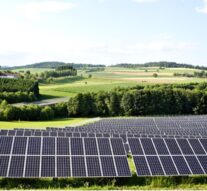
The EU ambitious plans on energy
Energy 24 May 2023Estimated time of reading: ~ 2 minutes
The European Union is determined to fight climate change while putting an end to its dependence on Russian fossil fuels. This is why, in the last few months, the EU reached a provisional deal on higher renewable energy targets. By 2030, the 27 EU countries should commit to sourcing 42.5% of their energy from renewable sources like wind and solar, with an additional 2.5% indicative top up that would allow them to reach 45%, as explained by the EU Council. It is worth noting that the EU’s current target for 2030 is set at just 32% renewable energy share. There is actually a high imbalance in the energy mix of the member states, ranging from the 63% renewable energy share of Sweden, the highest in the EU in 2021, to the 13% level of countries such as Luxembourg, Malta, the Netherlands, and Ireland.
This sets a really ambitious goal for the European Union, as member states should also cut net greenhouse gas emissions by 55% by 2030, from 1990 levels, while raising to 29% the share of renewables in energy used by the transport sector, with a direct impact on their automotive industries.
The provisional deal also focuses on faster permitting processes for wind and solar projects all over the EU, introducing dedicated “acceleration areas” for renewables. In this view, as the EU Council states, renewable energy deployment will also be presumed to be of overriding public interest, which would limit the grounds for legal objections to new installations. This would allow for easier procedures for any renewable projects in the EU.
In this context, the war in Ukraine could further shape the intentions of the EU countries, leading to new goals. According to the European Commission, there will be a need for additional investments of 113 billion euros in renewable energy and hydrogen infrastructure by 2030, if the EU aims to stop buying Russian oil and gas, putting a definite end to its dependency on fossil fuels coming from Moscow.
Written by: Francesco Marino


